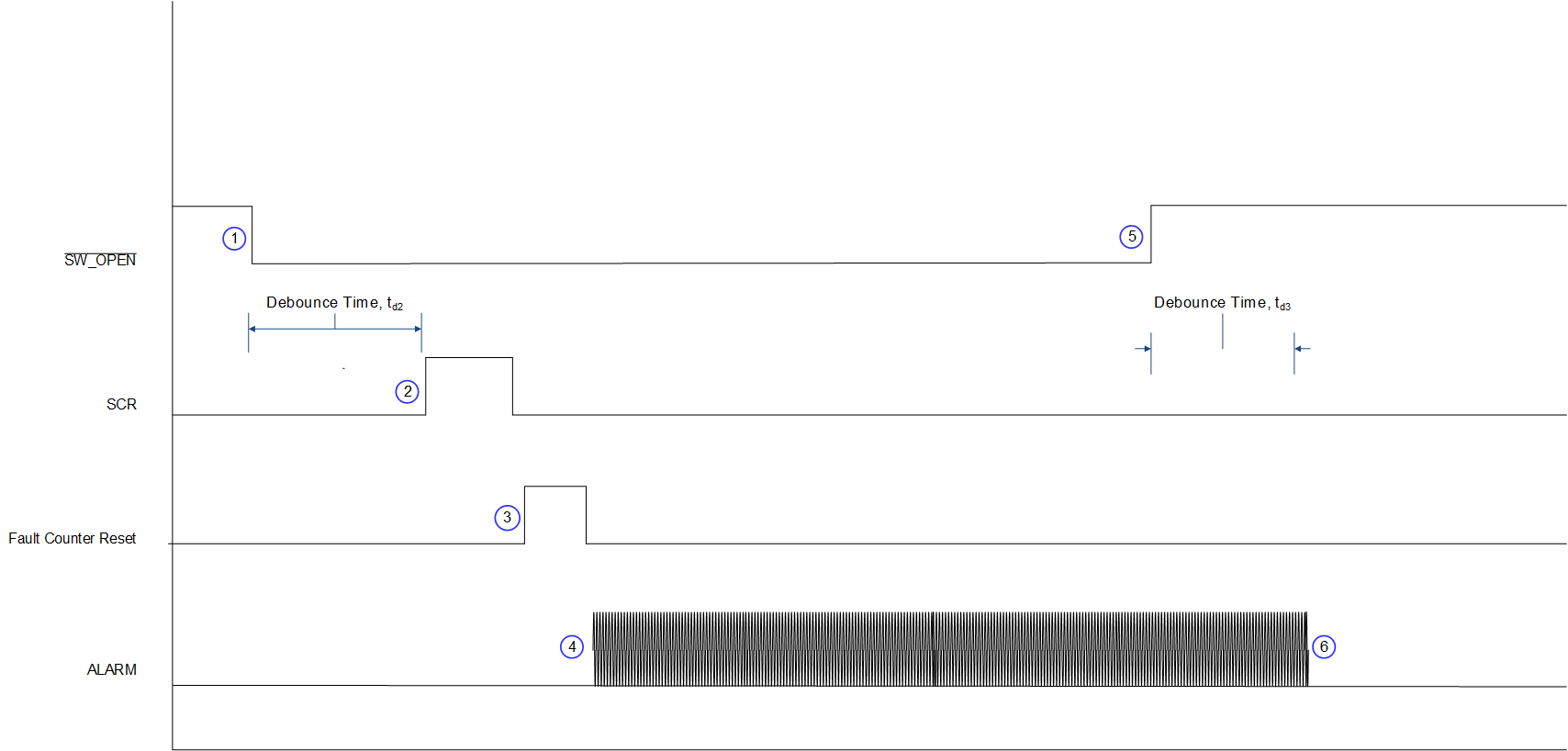SBFS042 June 2020 AFE3010
PRODUCTION DATA.
- 1 Features
- 2 Applications
- 3 Description
- 4 Revision History
- 5 Pin Configuration and Functions
- 6 Specifications
- 7 Detailed Description
- 8 Application and Implementation
- 9 Power Supply Recommendations
- 10Layout
- 11Device and Documentation Support
- 12Mechanical, Packaging, and Orderable Information
Package Options
Mechanical Data (Package|Pins)
- RGT|16
Thermal pad, mechanical data (Package|Pins)
- RGT|16
Orderable Information
8.1.2.1 No Self-Test Fail Event
If there is no self-test failure event, the ALARM is turned on without blinking when the SW_OPEN signal goes from high to low. Figure 13 describes the sequence of events.
 Figure 13. ALARM With SW_OPEN Transition to Low. No Self-Test Failure.
Figure 13. ALARM With SW_OPEN Transition to Low. No Self-Test Failure. - The SW_OPEN signal transitions from high to low.
- After a debounce time to ensure there is no false transition, the device fires the SCR.
- The internal fault counter resets.
- The ALARM turns on.
- The SW_OPEN signal transitions low to high.
- After a debounce time to ensure there is no false transition, the ALARM turns off.